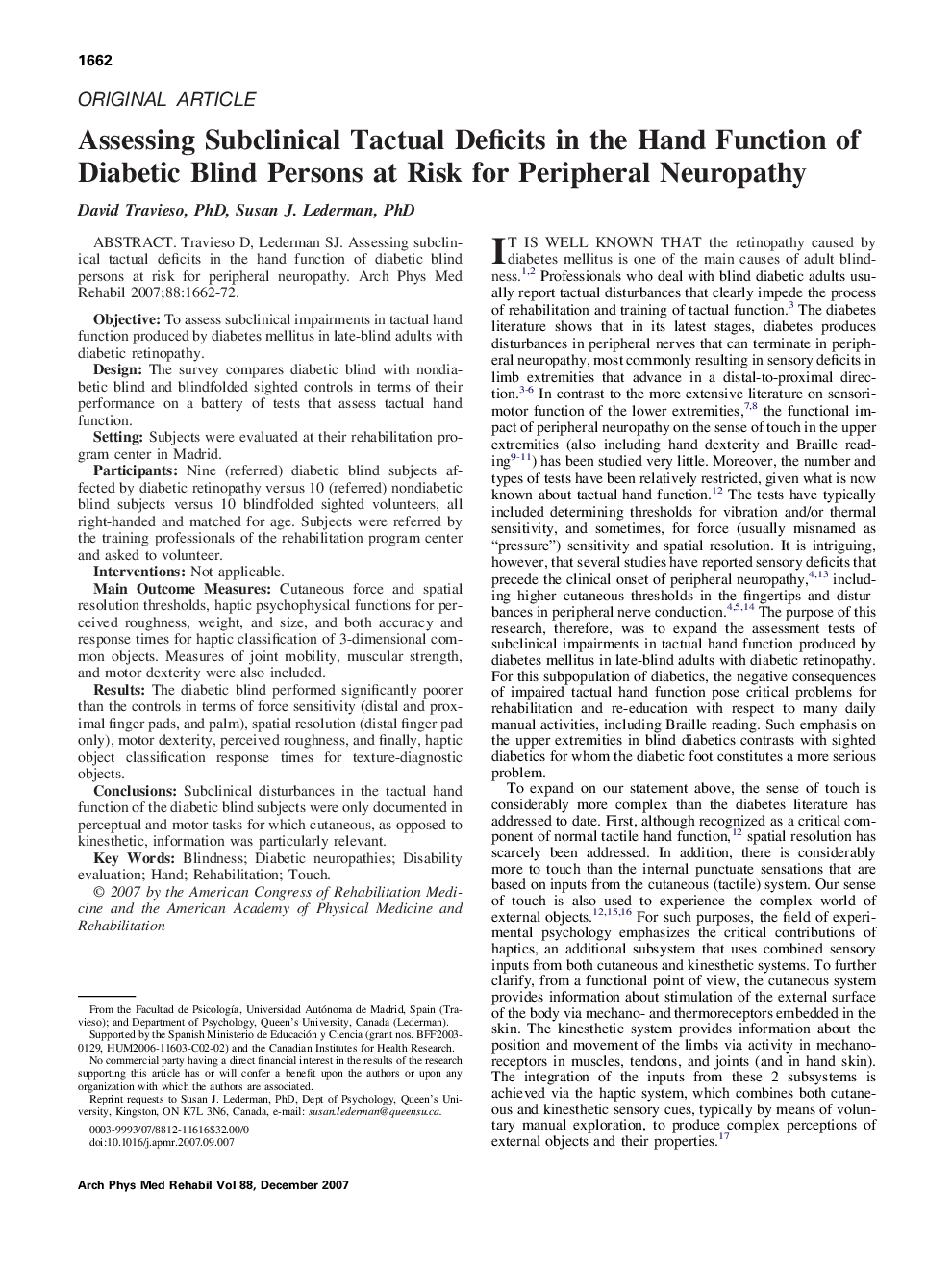| Article ID | Journal | Published Year | Pages | File Type |
|---|---|---|---|---|
| 3450867 | Archives of Physical Medicine and Rehabilitation | 2007 | 11 Pages |
Travieso D, Lederman SJ. Assessing subclinical tactual deficits in the hand function of diabetic blind persons at risk for peripheral neuropathy.ObjectiveTo assess subclinical impairments in tactual hand function produced by diabetes mellitus in late-blind adults with diabetic retinopathy.DesignThe survey compares diabetic blind with nondiabetic blind and blindfolded sighted controls in terms of their performance on a battery of tests that assess tactual hand function.SettingSubjects were evaluated at their rehabilitation program center in Madrid.ParticipantsNine (referred) diabetic blind subjects affected by diabetic retinopathy versus 10 (referred) nondiabetic blind subjects versus 10 blindfolded sighted volunteers, all right-handed and matched for age. Subjects were referred by the training professionals of the rehabilitation program center and asked to volunteer.InterventionsNot applicable.Main Outcome MeasuresCutaneous force and spatial resolution thresholds, haptic psychophysical functions for perceived roughness, weight, and size, and both accuracy and response times for haptic classification of 3-dimensional common objects. Measures of joint mobility, muscular strength, and motor dexterity were also included.ResultsThe diabetic blind performed significantly poorer than the controls in terms of force sensitivity (distal and proximal finger pads, and palm), spatial resolution (distal finger pad only), motor dexterity, perceived roughness, and finally, haptic object classification response times for texture-diagnostic objects.ConclusionsSubclinical disturbances in the tactual hand function of the diabetic blind subjects were only documented in perceptual and motor tasks for which cutaneous, as opposed to kinesthetic, information was particularly relevant.
